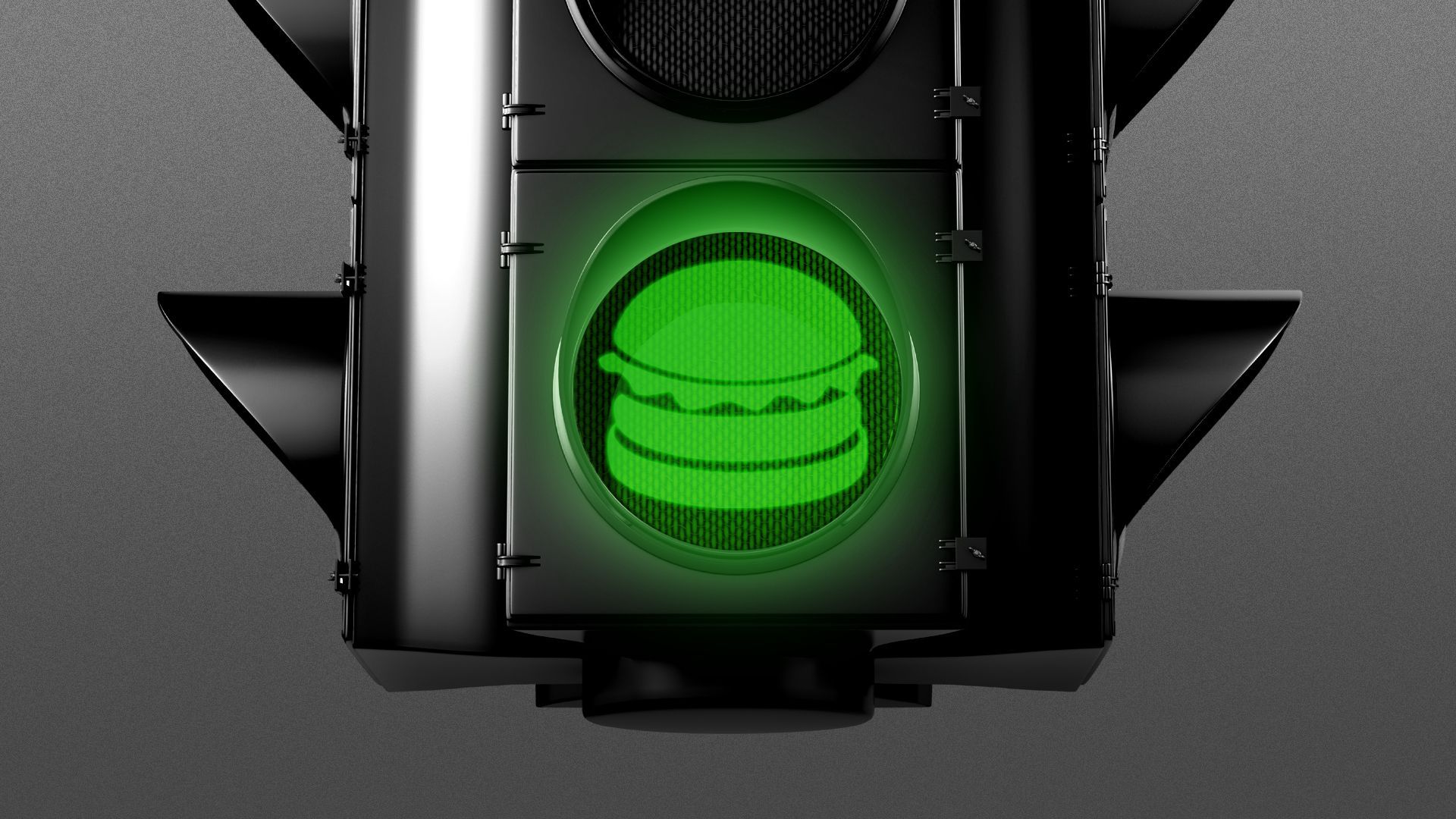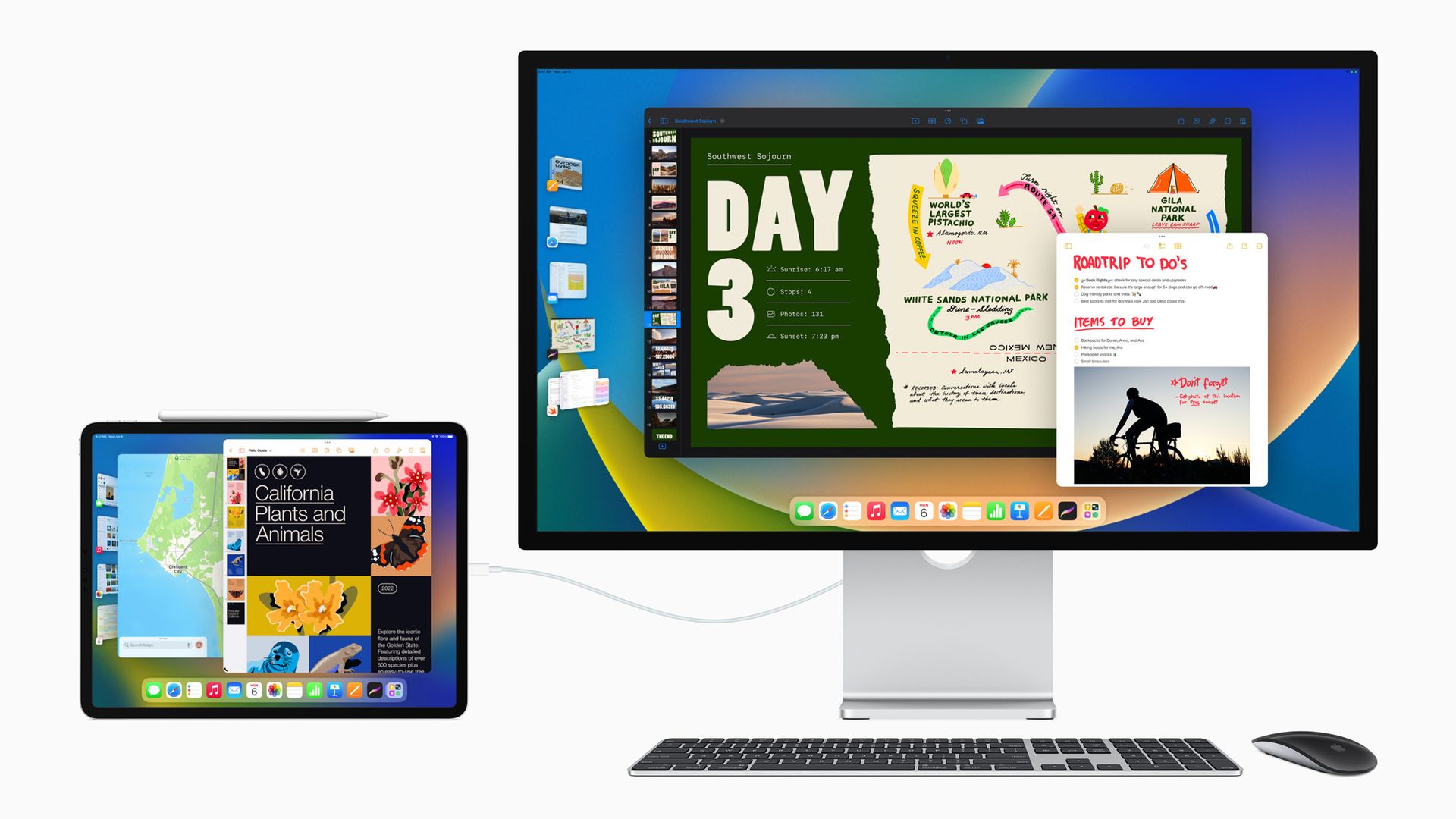| As the White House launches an historic summit to combat food inequality on Wednesday, some tech companies are already taking steps to provide home delivery services for people who need food, Axios' Margaret Harding McGill reports. The big picture: Food banks have increasingly relied on donated services from DoorDash and Amazon as the COVID-19 pandemic highlighted how many people in the U.S. don't have enough to eat, a problem that has persisted even as the pandemic wanes. - In 2021, 10% of U.S. households experienced food insecurity, according to a USDA report.
Driving the news: The White House Conference on Hunger, Nutrition, and Health is the first such event since the Nixon administration, with a goal of ending food insecurity in the U.S. in eight years. - As part of the conference, DoorDash announced a partnership with 18 mayors to provide them with data on food access needs, direct funding for delivery and the company's logistics to help local delivery of charitable food through its Project DASH program.
- Instacart announced a pilot program with the Partnership for a Healthier America that will provide families in need with a restricted stipend to buy nutritious food, along with a free Instacart membership and waived delivery fees.
What's happening: DoorDash's Project DASH provides local delivery services to food banks to reach people in need. - The program has grown from making 6,000 deliveries in 14 states and D.C. in 2018 to more than 1.5 million deliveries so far this year in 49 states and D.C.
- Amazon launched its Community Delivery program — donating the transportation and logistical support to food banks — in 2020. It's available in 20 states and D.C., and is on track to deliver 315,000 boxes of food this year.
What they're saying: "COVID was a reawakening of how much local delivery can really have an impact within nonprofits," Brittany Graunke, DoorDash Drive director, told Axios. Zoom in: The Food Bank of Delaware says the home delivery service has become a vital distribution method, and it's shifting its model from mass distribution sites to more home deliveries. - Deliveries jumped from about 4,300 in fiscal year 2021 to 41,000 in fiscal year 2022, Food Bank of Delaware CEO Cathy Kanefsky told Axios. She doesn't expect the demand to abate.
- "We've had people say they've had to just choose, do they want to put gas in their car or food on their table?" Kanefsky told Axios. "That decision is a huge one for people."
Likewise, Hunger Free Pennsylvania is making about 6,000 deliveries a month to seniors via DoorDash, and said about 25% of its program is delivery now. It's expected to grow to 30% or 40%. - "The seniors just love it," Sheila Christopher, executive director of Hunger Free Pennsylvania told Axios.
Zoom out: A lack of reliable transportation was an issue pre-pandemic for people experiencing food scarcity, but the pandemic increased the challenges, Minerva Delgado, director of coalitions and advocacy for the Alliance to End Hunger told Axios. - Food providers find it difficult to reach seniors who are homebound, parents of young children, or those who must isolate due to illness unless they provide delivery.
- "They're tapping into a need that many times was going unmet or they weren't meeting the need in a way that provides the end user with the convenience and dignity that they have with home delivery," Delgado told Axios.
Between the lines: While gig economy businesses like DoorDash say they grow local economies and empower workers with flexible opportunities, these companies have also been criticized for paying low wages or even promoting worker inequality. The intrigue: The explosion of interest in home delivery has raised questions about how long the services can be free. - DoorDash pays its dashers for the deliveries, and while some food banks can cover subsidize costs, the company largely foots the bill.
- DoorDash intends to expand into new communities, but Graunke noted that it is looking at how it can partner with organizations to bring the service to more people because it's "unrealistic for DoorDash to go it alone."
What's next: Food advocacy organizations are gearing up for next year's farm bill, and hoping policy makers will ease regulations to make home delivery services more feasible. | 







No comments:
Post a Comment